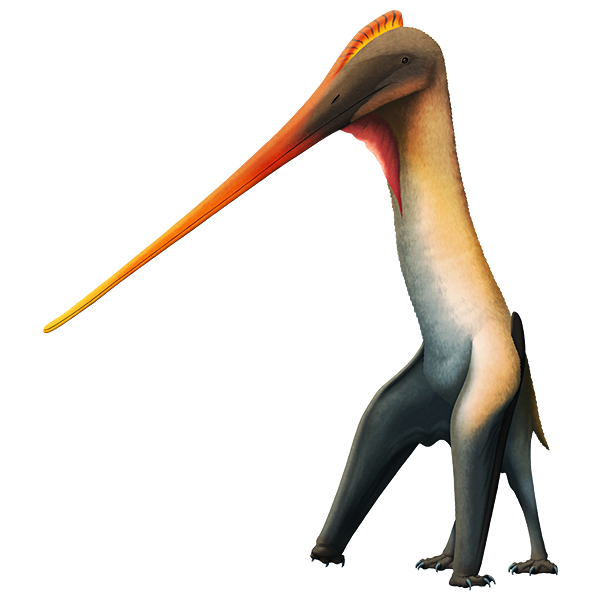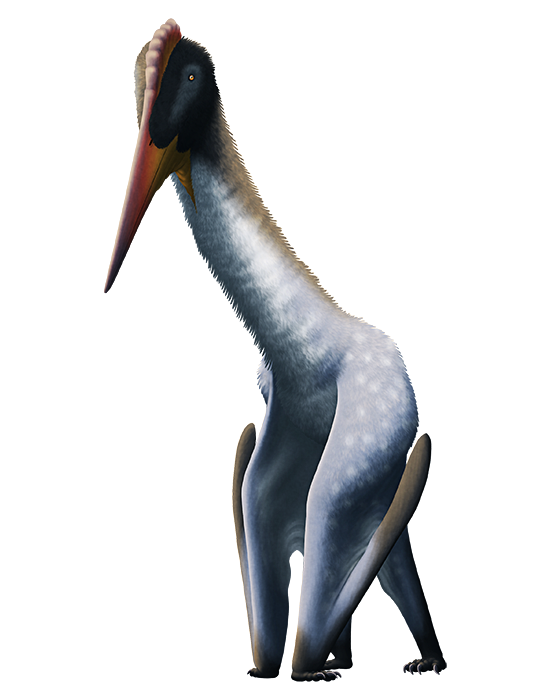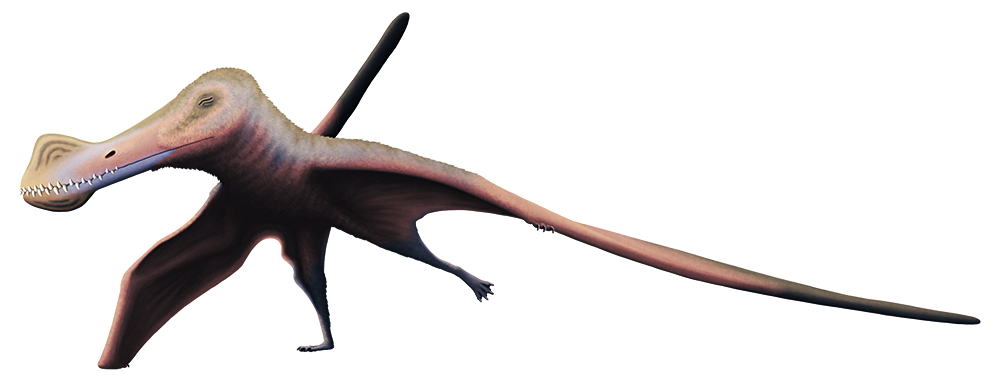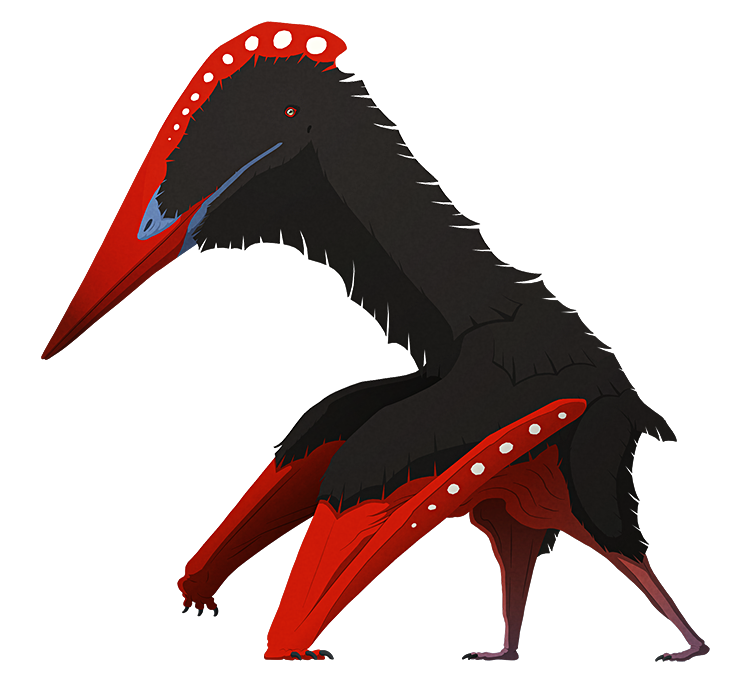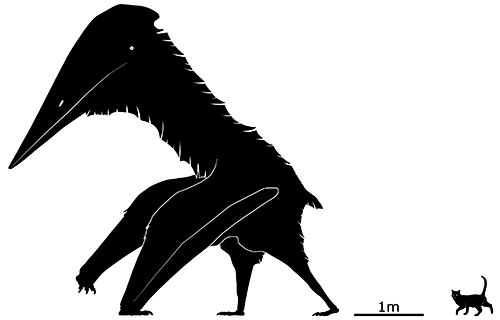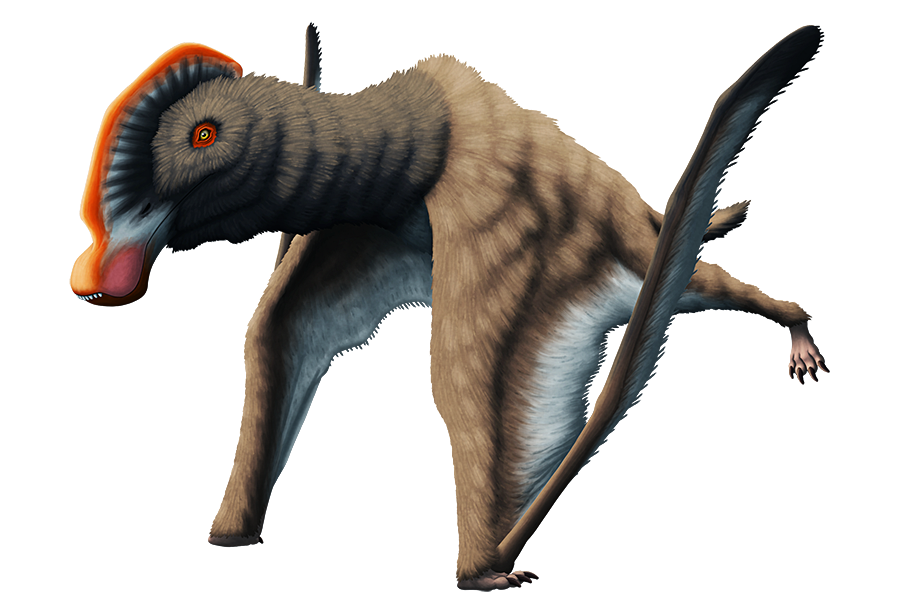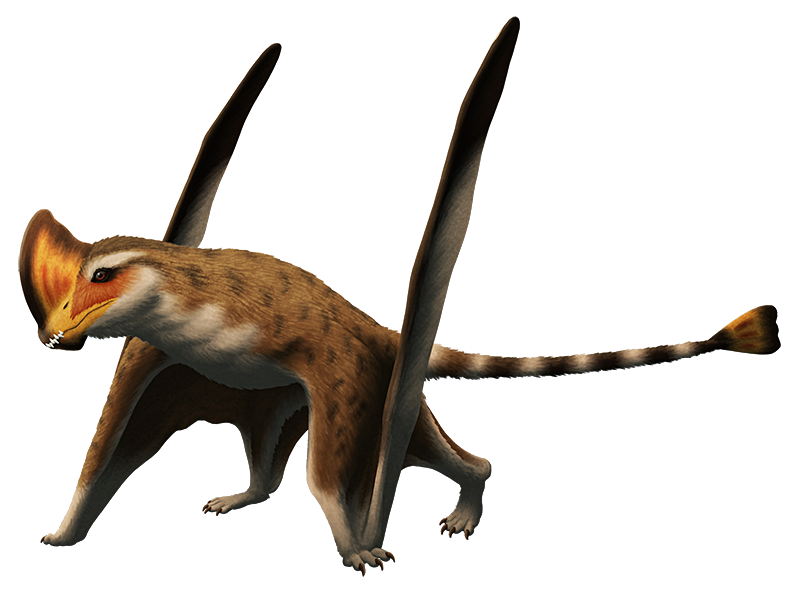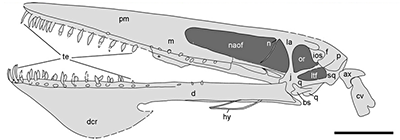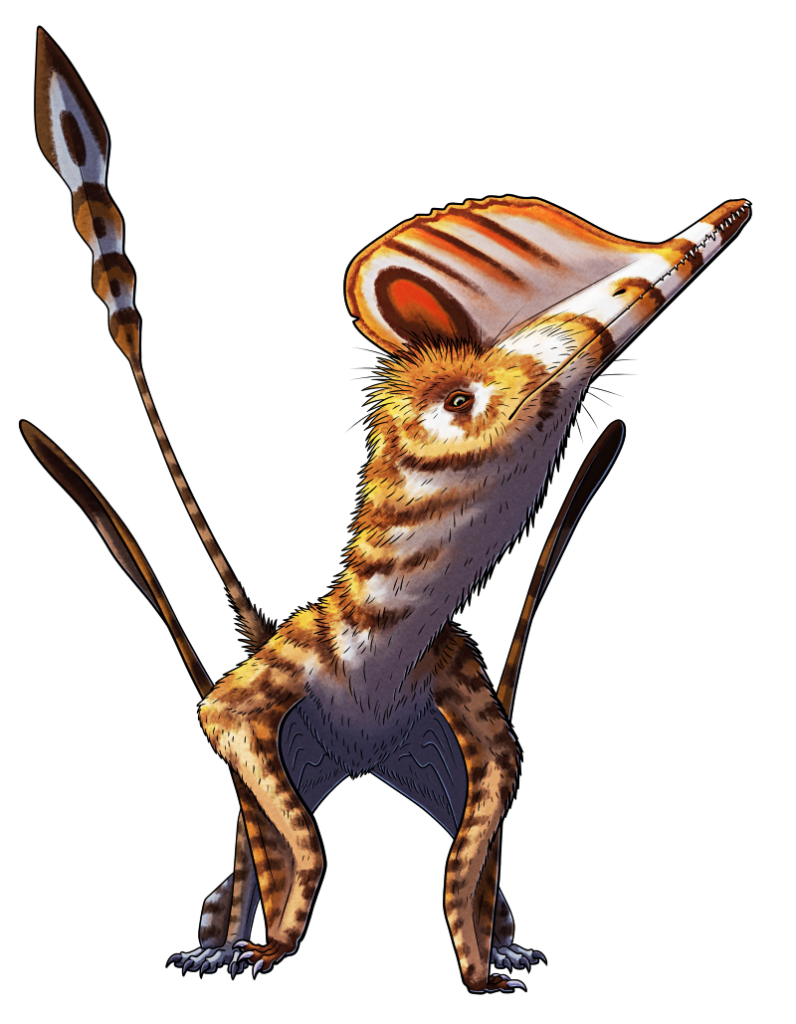
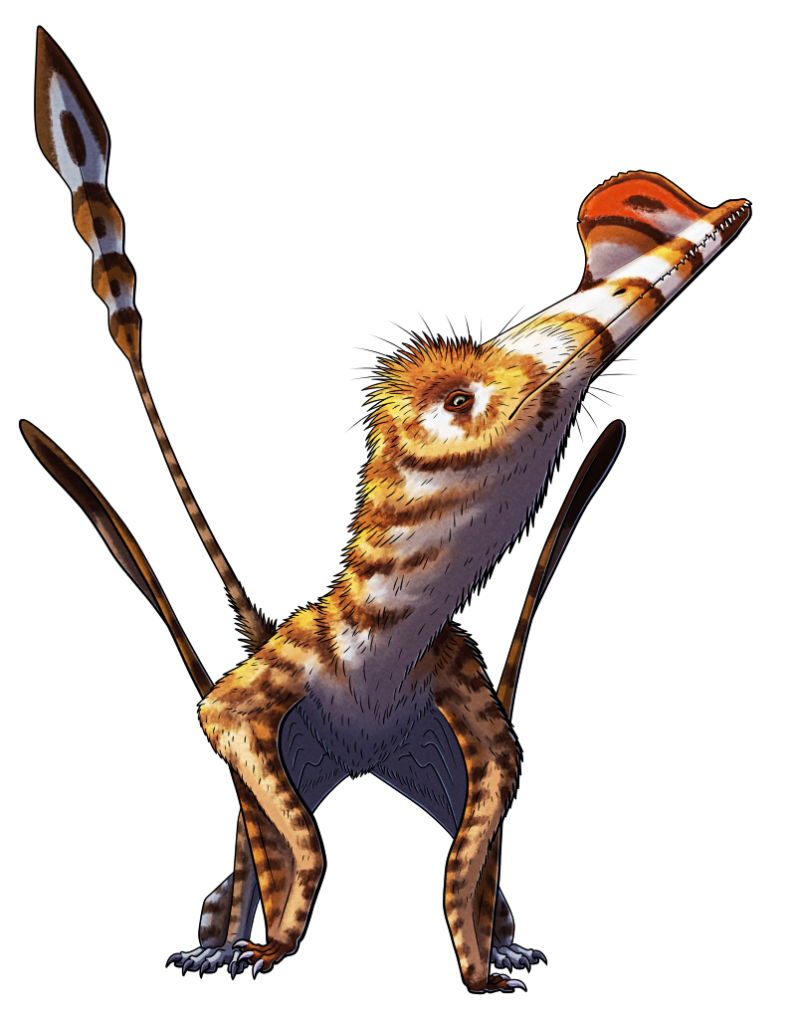
Wukongopterus lii was a pterosaur that lived during the mid-to-late Jurassic, about 164 million years ago, in what is now northeastern China. It was fairly small, with a wingspan of around 70cm (~2’4″), and showed a mixture of anatomical features in-between the long-tailed short-headed ‘rhamphorhynchoids‘ and the short-tailed long-headed pterodactyloids.
Its long jaws were lined with tiny pointed conical teeth, suggesting it was adapted for primarily feeding on insects. It also had a very slight overbite, with the first two pairs of teeth in its upper jaw protruding almost vertically over the end of its lower jaw.
As a fully mature adult it would have had a low bony crest on its head that probably supported a larger cartilaginous structure – similar to other known wukongopterids – although the exact size and shape is unknown since the one confirmed specimen of Wukongopterus is missing that particular part of its skull. Another fossil nicknamed “Ian” may represent a second individual of this species, showing a different crest arrangement further forward on its snout, so I’ve made two different versions of today’s image to reflect that possibility.
Continue reading “Wukongopterus”
